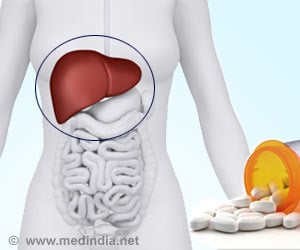Highly effective and improved drug therapies along with the newly implemented screening guidelines, could make hepatitis C a rare disease in the United States by 2036.

A "rare" disease is one that affects at most one in every 1,500 people. Approximately one in every 100 people in the U.S. currently has chronic hepatitis C, a viral infection that compromises liver function.
"Making hepatitis C a rare disease would be a tremendous, life-saving accomplishment," said lead author Mina Kabiri, M.S., a doctoral student in Pitt Public Health's Department of Health Policy and Management. "However, to do this, we will need improved access to care and increased treatment capacity, primarily in the form of primary care physicians who can manage the care of infected people identified through increased screening."
In the U.S., hepatitis C is the leading cause of chronic liver disease and the leading reason for liver transplantation. At 15,100 deaths annually, hepatitis C surpassed the annual number of deaths from HIV in 2007. The economic burden associated with chronic infection is estimated at $6.5 billion a year.
"This is, indeed, a very interesting time for hepatitis C patients and providers," said senior author Jagpreet Chhatwal, Ph.D., now of the University of Texas MD Anderson Cancer Center, who performed most of the research while at Pitt Public Health. "Several changes have happened in the last two years, including screening policy updates and availability of highly effective therapies."
In 2012, the Centers for Disease Control and Prevention and the U.S. Preventive Services Task Force recommended that anyone born between 1945 and 1965 — encompassing about 81 percent of chronically infected people — receive a one-time screening for hepatitis C. Hepatitis C often is asymptomatic, meaning that infected people do not know they have it until it is detected through a blood screening.
Advertisement
The research team created a highly detailed computer model of the natural history and progression of hepatitis C, both with and without treatment. The model predicts the number of hepatitis C infections in the U.S. at any given time from 2001 to 2050, under multiple potential scenarios describing future treatment, while taking into consideration infection status awareness, stage of disease, treatment history and continued drug development, based on data from the National Health and Nutrition Examination Survey (NHANES) and published clinical studies.
Advertisement
The research team then considered what would happen if the guidelines were increased to include a one-time universal screening for hepatitis C among all U.S. citizens, not just baby boomers.
"In that scenario, nearly 1 million cases of hepatitis C would be identified in the next 10 years," said Ms. Kabiri. "And that translates into making hepatitis C a rare disease by 2026, a decade earlier than we'd predicted with the current screening guidelines."
The researchers note that such a measure would bring increased costs. The oral therapy regimen costs as much as $1,000 per day.
The model estimated that universal screening coupled with the new drug therapies would reduce liver-related deaths by 161,500 and liver transplants by 13,900 from 2014 to 2050.
"Though impactful, the new screening guidelines do not identity the large number of hepatitis C patients who would progress to advanced disease stages without treatment and could die," said Dr. Chhatwal. "More aggressive screening recommendations are essential in further reducing the burden, preventing liver-related deaths and eventually eradicating hepatitis C."
Future research will be needed to determine how the reduction in deaths and transplants offsets the increased costs of screening and drug therapy.
Source-Eurekalert















